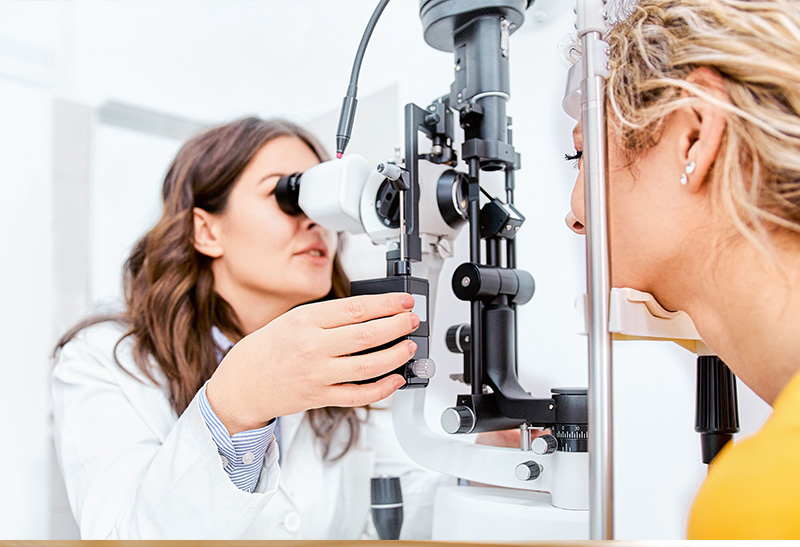All Categories
Featured

With the surge of technology, our everyday screen time has escalated. From working on computer systems to scrolling with smartphones, digital gadgets are now an important part of life. While these innovations have improved benefit and connectivity, they've likewise introduced a typical problem: digital eye strain. Signs like blurred vision, frustrations, dry eyes, and neck discomfort can arise from prolonged display use. There are functional actions you can take to secure your eyes and maintain them healthy and balanced in this electronic age.
Comply With the 20-20-20 Regulation. One of the easiest and most efficient ways to reduce digital eye strain is by embracing the 20-20-20 guideline. This provides your eye muscle mass a chance to kick back and avoids prolonged anxiety from concentrating on a neighboring display.

Optimize Your Display Configuration. The placement of your screen plays a significant role in lowering eye stress. Setting your computer system monitor about an arm's length far from your face, with the top of the display at or just below eye level. This configuration ensures that your eyes normally look a little downward, decreasing stress and aiding you keep correct stance.
Additionally, adjust the brightness and contrast of your screen to match your surroundings. A screen that's also bright or also dim can force your eyes to function tougher. Using a blue light filter or triggering your gadget's "evening setting" can also decrease the rough impacts of blue light on your eyes, particularly in the evening.
Blink More Frequently. When looking at displays, people have a tendency to blink much less regularly, which can result in dry, irritated eyes. Make a mindful effort to blink more frequently while utilizing electronic devices. If you still experience dry skin, consider using lubricating eye drops or synthetic tears to keep your eyes comfy.
Take Breaks and Move. Extended display use does not just affect your eyes-- it also impacts your neck, shoulders, and back. Taking normal breaks to stand up, stretch, and walk around can reduce physical discomfort and minimize overall exhaustion. Time-outs every thirty minutes approximately can make a large distinction.
Restriction Display Time. Whenever possible, limitation unnecessary display time, particularly prior to going to bed. The blue light from electronic gadgets can interrupt your sleep cycle by suppressing melatonin production. To protect both your vision and sleep high quality, stay clear of screens for a minimum of an hour prior to going to sleep.
Keep Hydrated and Usage Correct Lights. Dry eyes can also arise from dehydration, so drink a lot of water throughout the day to stay hydrated. Additionally, ensure your workspace is well-lit but cost-free of glow. Avoid placing your display in straight sunshine or under rough artificial lights that show on the screen.
Purchase Computer System Glasses. If you invest lengthy hours in front of a display, consider investing in blue light-blocking or computer system glasses. These specialized lenses decrease glow, filter blue light, and enhance focus, making display time more comfortable for your eyes. Speak with an eye care specialist to establish if these glasses are right for you.
Don't Miss Regular Eye Exams. Regular eye tests are essential, specifically if you use digital tools regularly. An eye doctor can examine your vision, identify possible concerns, and recommend tailored services to safeguard your eyes. They can likewise suggest computer glasses or suggest various other techniques for lessening digital eye stress.
Conclusion. By carrying out basic techniques like the 20-20-20 guideline, enhancing your screen configuration, and taking normal breaks, you can protect your vision and keep eye health. Make these behaviors part of your day-to-day regimen, and don't fail to remember to prioritize normal eye exams to maintain your eyes in leading condition.
Latest Posts
Recognizing When Your Car Needs Skilled Auto Repair at Montclare Auto Repair
Learn About Exceptional Auto Repair Services in Chicago – Expert Care for Your Vehicle
Boost Your Home's Exterior with Weathercraft's Exterior siding Solutions
More
Latest Posts
Recognizing When Your Car Needs Skilled Auto Repair at Montclare Auto Repair
Learn About Exceptional Auto Repair Services in Chicago – Expert Care for Your Vehicle
Boost Your Home's Exterior with Weathercraft's Exterior siding Solutions